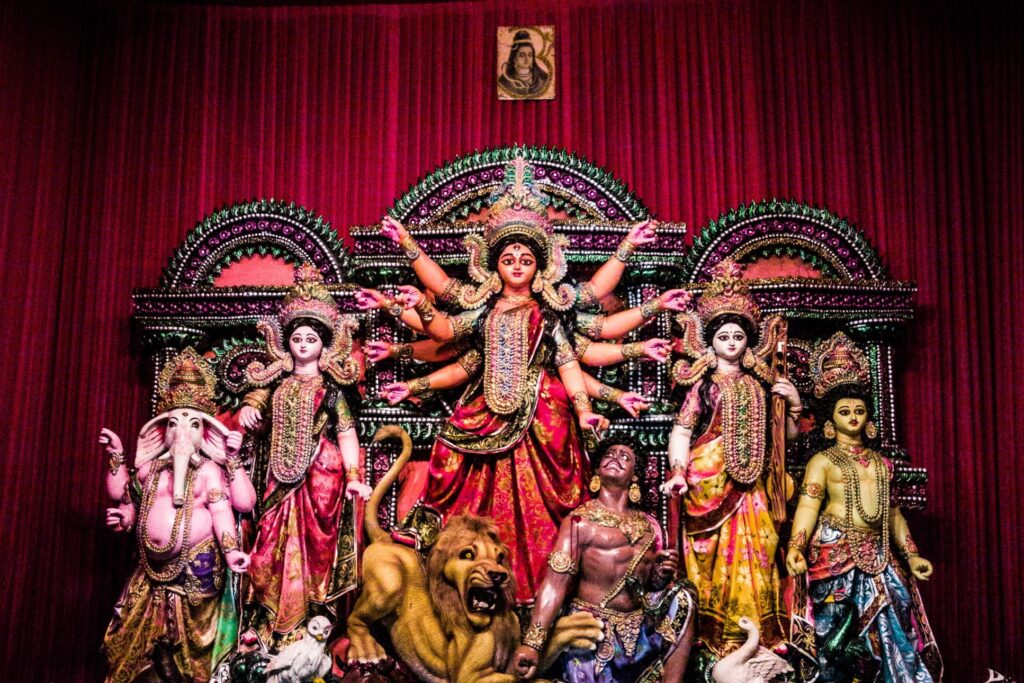
‘UNESCO brings good news for Bengal’s Durga Pooja’
UNESCO accorded West Bengal’s Durga Pooja as a World Heritage Site.
The 16th Committee of UNESCO for safeguarding of the Intangible Cultural Heritage met on 16th on Wednesday in Paris in the UNESCO headquarters.
In the meeting, the UNESCO inscribed the biggest festival of West Bengal-Durga Pooja, on the representative list of Intangible Cultural Heritage of Humanity.
This is the first time a festival from Asia is being listed in the list and to receive the recognition.
UNESCO’s Durga Pooja
“Durga Puja is an annual festival celebrated in September or October, most notably in Kolkata, in West Bengal of India, but also in other parts of India and amongst the Bengali diaspora,” the UNESCO wrote on its website on Wednesday, mentioning the cultural activities, involvement of artisans and participation of the masses.
“Durga Puja is seen as the best instance of the public performance of religion and art, and as a thriving ground for collaborative artists and designers. The festival is characterized by large-scale installations and pavilions in urban areas, as well as by traditional Bengali drumming and veneration of the Goddess. During the event, the divides of class, religion and ethnicities collapse as crowds of spectators walk around to admire the installations,” the UNESCO website reads.
Durga Pooja
Durga Pooja is a festival celebrating the power of women and these women were instrumental in getting the Durga Pooja the heritage tag.
While many men and women worked tirelessly to inculcate the festival in the list, it is imperative to mention the two womenfolk who set the stage for inscription in the list-
- UNESCO’s announcement was welcomed by Bengal’s ruling Trinamool Congress (TMC) as chief minister Mamata Banerjee is widely recognized as the biggest patron of the festival.
Banerjee has drawn criticism from opposition parties for granting government funds for community puja organising clubs and holding a carnival at Kolkata’s Red Road before immersion of the idols
- Historian Tapati Guha Thakurta, whose research on Durga Pooja and the archival material that she had collated with her team over the years at the Jadunath Bhavan Museum and Resource Centre, was instrumental in helping Durga Pooja get the status it deserved.
The dossier of research and significance of Durga Pooja made by her was sent to the UNESCO by the Union Cultural Ministry to consider Durga Pooja as a heritage site.
Economies of Durga Pooja
We all know the significance of Durga Pooja and each year wait with excitement to see the biggest and the most beautiful Durga Pooja pandal built in West Bengal, for example this year’s Burj Khalifa pandal or the Bahubali pandal in the previous years.
However, we still might be dwarfing the significance of the festival and the impact it has on the crores of people of West Bengal.
As many as 36,946 community Durga Pujas are organised in Bengal. Of these, around 2,500 are held in Kolkata. In recent years, several organisations had urged UNESCO to recognise the festival.
The budget of many community puja organisers in Kolkata and the districts runs into several lakhs of rupees. The money is raised through subscription from members of the public and corporate sponsorship. According to a study the British Council of India conducted last year, the economic value of the artistic creations and cultural activities during Durga Puja in West Bengal is more than ₹32,300 crore.
That is a lot of money in a state that has the highest beggar population in India.
But the Durga Pooja pandal making bodies feel that this recognition by the UNESCO would help the state attract more tourists from next year and help make this festival significant pan-India.
Other Indian practices in the list
With the inclusion in the list, Durga Pooja joins the club of other Indian cultural practices already recognised by the UNESCO like such as Kumbh Mela, Chhau dance from Bengal and Odisha, Sankirtana from Manipur, Yoga, Ramlila, Buddhist chanting in Ladakh and Nawruz.
Traditional yoga and the Kumbh Mela got the recognition in 2016 and 2017 respectively. On Wednesday, the Durga Puja was the only Indian festival to make it to the list of 20 events and traditional activities.
Intangible Cultural Heritage
Defining Intangible Cultural Heritage, the UNESCO (United Nations Educational, Scientific and Cultural Organization) has said: “The term ‘cultural heritage’ has changed content considerably in recent decades, partially owing to the instruments developed by UNESCO. Cultural heritage does not end at monuments and collections of objects. It also includes traditions or living expressions inherited from our ancestors and passed on to our descendants, such as performing arts, oral traditions, social practices, rituals, festive events, knowledge and practices concerning nature and the universe.”
